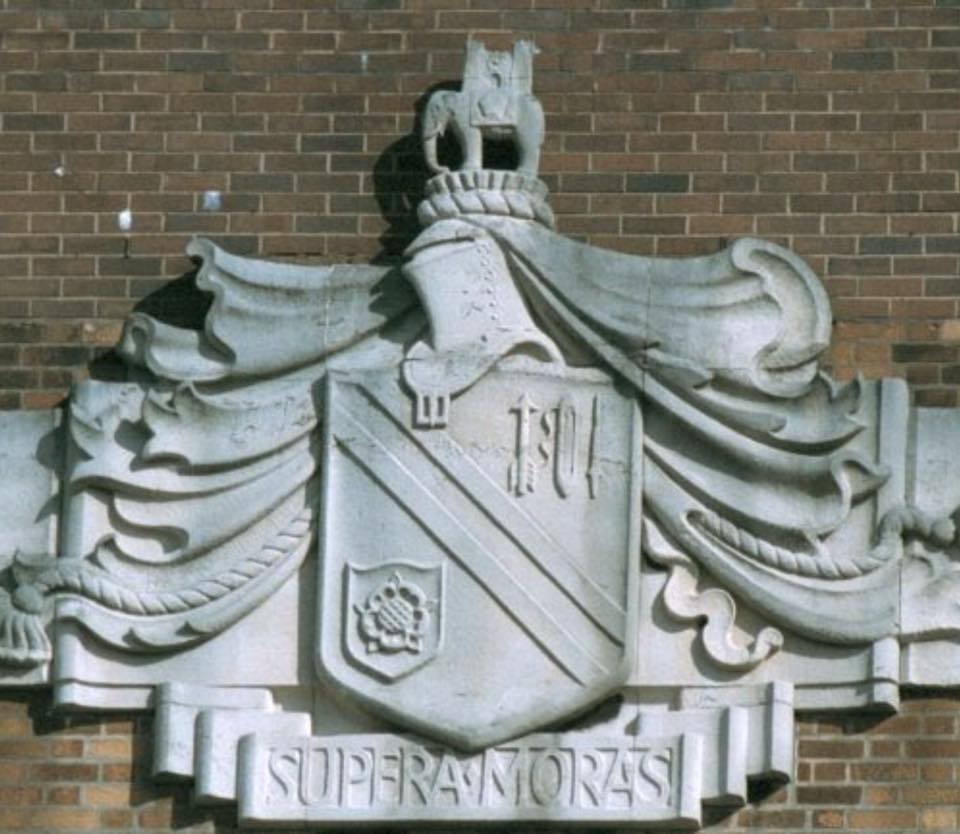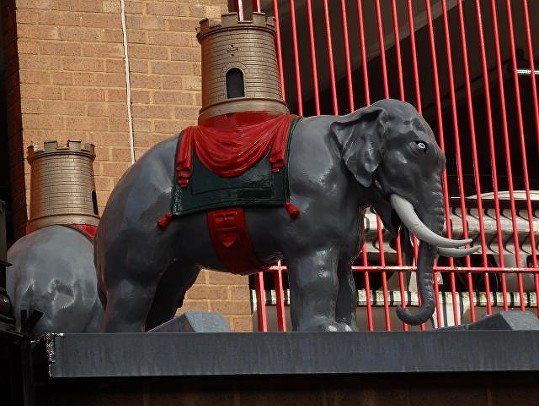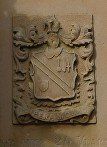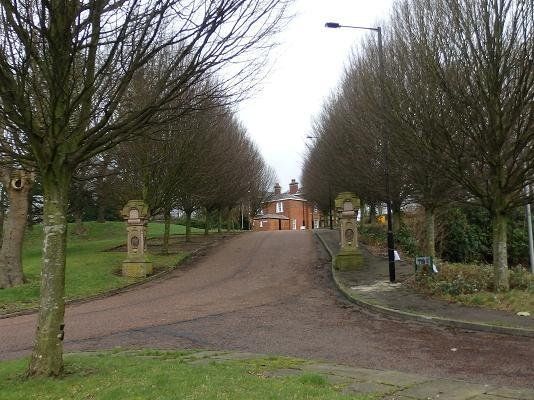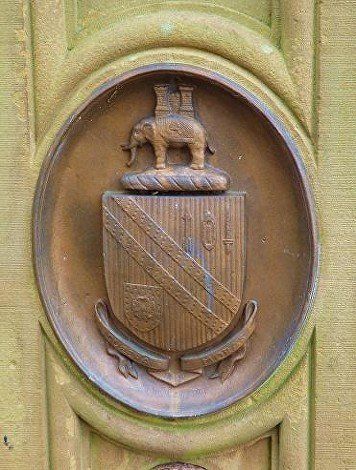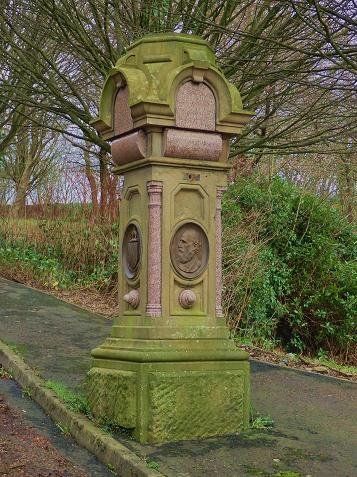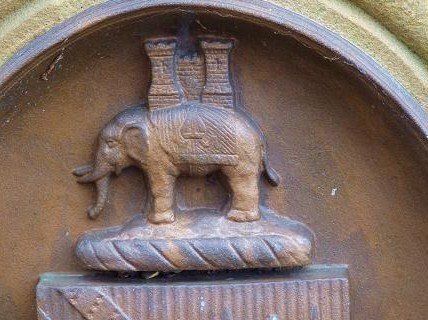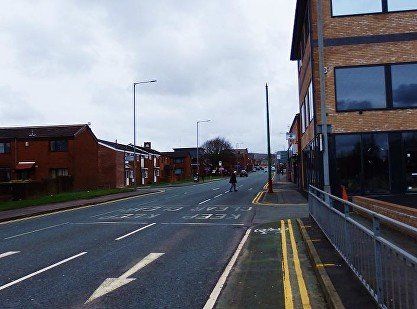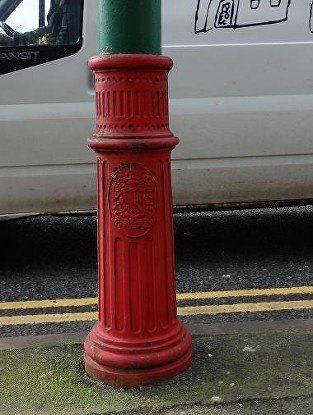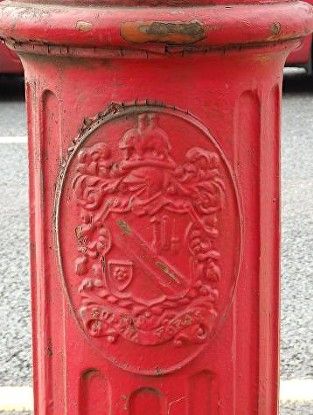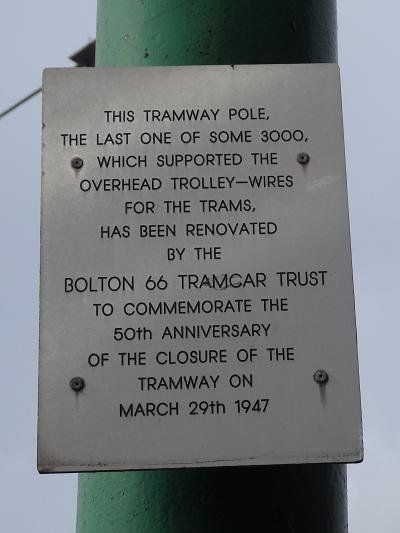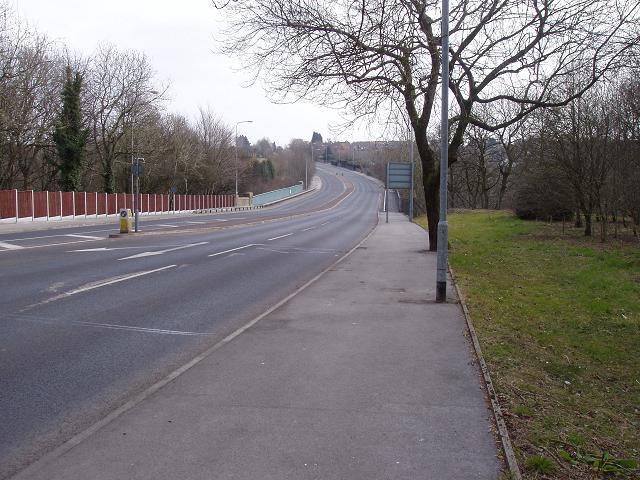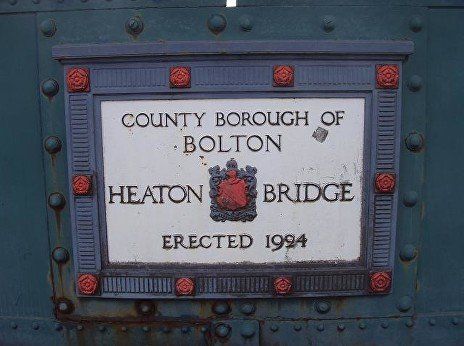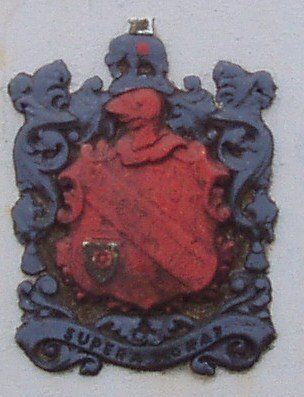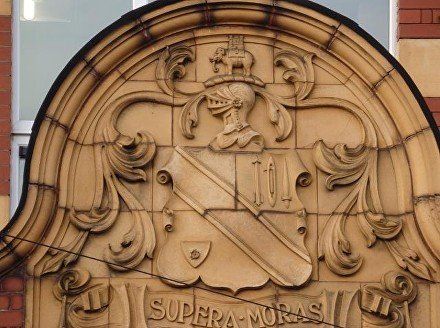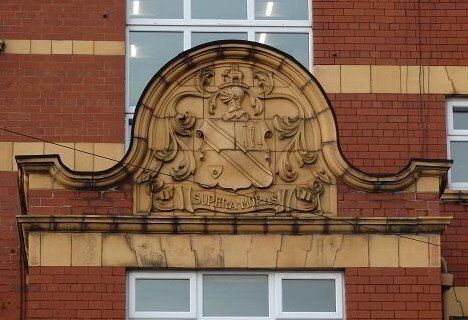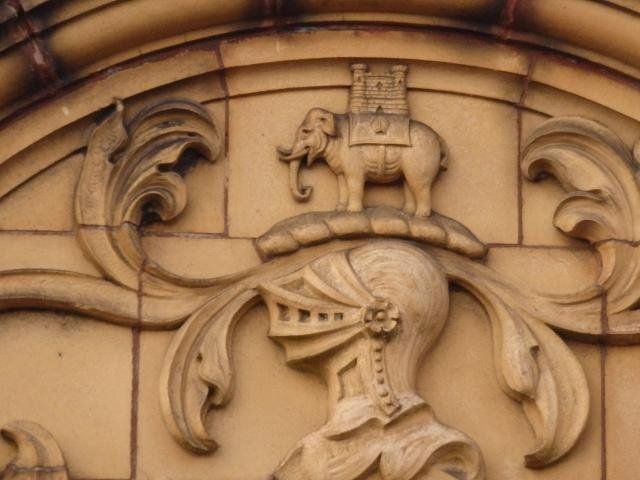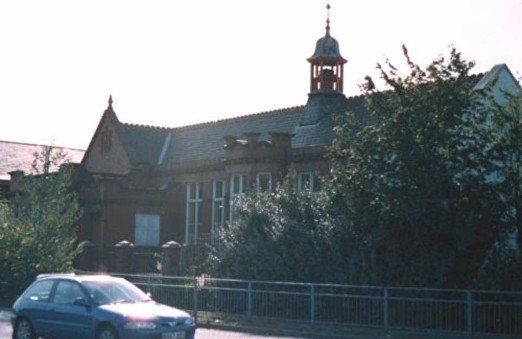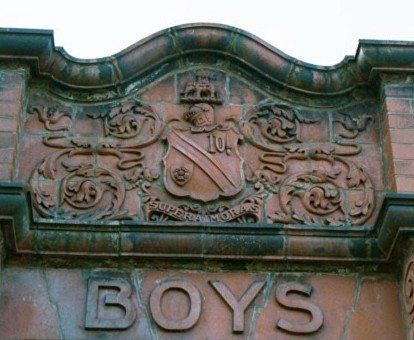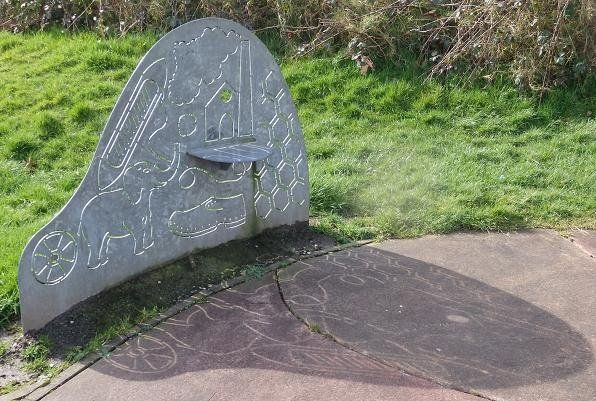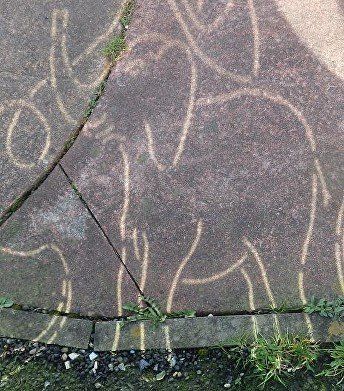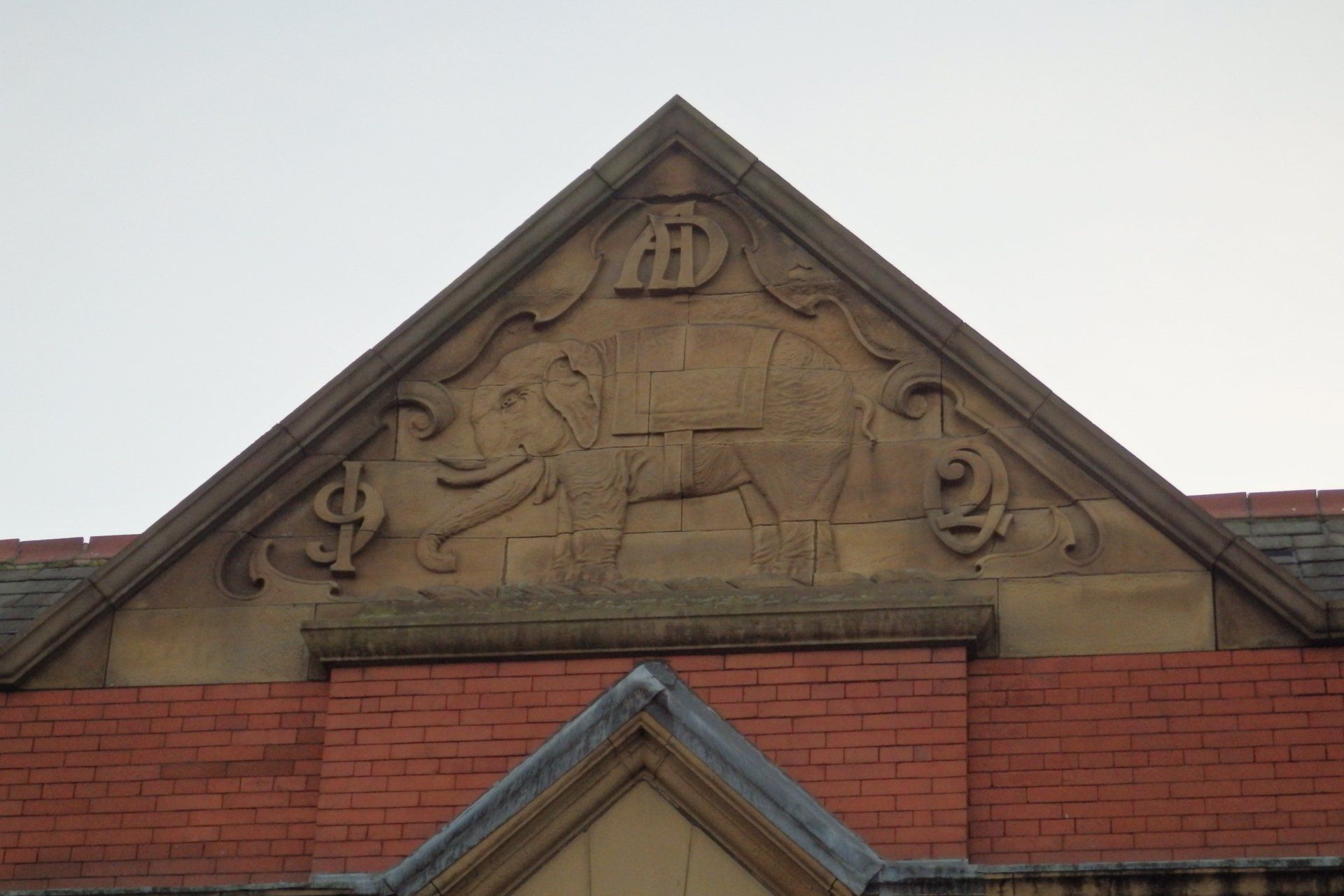The first picture is the drive up to Mere Hall in Thomasson Park, Brownlow Fold. It is flanked by two quite grand gate posts. though I doubt if they were ever intended to have gates hung on them. They bear the date 1890 which is when the house and its grounds were given to the town by J P Thomasson. The posts have plaques, one of which is a portrait of JPT and the other the County Borough coat-of-arms with the elephant.
John Pennington Thomasson was the fourth in the family line of Bolton cotton mill owners, born in 1841, died 1904. He followed his father’s example with many public benefactions. By 1876 he had given 100 scholarships to the value of £25 each for three years. In 1881 he financed the building of the Haulgh Board School, gave £1,000 towards the founding of the Chadwick Museum, and built the Folds Road gymnasium. In all it is calculated that he gave over £30,000 to the cause of education in the borough. In 1890 he gave Mere Hall, built in 1836 by and previously the residence of Sir Benjamin Dobson, to the town as a public park, library, museum and art gallery together with £5,000 towards alterations.
He was elected as a Member of Parliament for Bolton at the 1880 general election. He served for 5 years
He was made a freeman of the borough in 1902. Although his family background was with the Quakers, he was a Unitarian and a keen supporter of Bank Street Chapel. He was an early supporter of the Women's suffrage movement.
=================================================================================
Now we go to Halliwell Road. On the right hand side immediately after you have turned into Halliwell Road is a tall cast iron pole. The text on the last picture tells you what this is. After trams stopped running most of these poles were left in situ for many years. On Derby Street / St Helens Road they became the poles supporting the trolley bus wires. On all main roads they were used as lamp posts. Over the years they have of course been removed or replaced by more modern lampposts but this one is preserved. On the collar round its base is moulded a coat-of-arms of course with the elephant.
Further up Halliwell Road just past Falcon Mill we come to Harvey Street with the building which used to be a Co-op on the corner.
We have the intriguing looking Harvey Street. (Click on a picture and navigate)
On the right is what was probably just the entrance foyer to the Co-op, now a drama school. The Co-op buildings of the early twentieth century were all built in a similar recognisable style. Later (in the 1930s?) a more modern style was introduced with each co-op being different though this building does share characteristics with the Four Lane Ends building and that on Wigan Road.
We close in on the coat-of-arms which includes familiar symbols of the co-operative movement.
And the elephant which sadly has suffered some erosion.
=========================================================================
The part of the ring road between Wigan Road and Chorley New Road, Beaumont Road crosses the River Croal and the Bolton - Preston railway at Heaton Bridge. This was constructed in 1924 and plaques on both sides of the road giving this commemoration of course carry the coat-of-arms with the elephant. Volunteer required to do a better repainting job!
The road used to be this empty most of the time and was well used by learner drivers. These days it is very busy and this picture was taken at a coincidence of red traffic lights just behind us and just out of sight in the distance.
At the corner of Church Road and Captain's Clough Road is Church Road Primary School. It is similar to a number of other schools in Bolton but this one has one of the best and best preserved elephants.
Kay Street Primary School, probably built 1888 on the site of the Old Chapel House and demolished probably when Kay Street was widened as the top end of St Peter's Way. It has terra-cotta embellishments. The bay at the centre of the building in the the LH picture carries the detail of the RH picture (unless this is a similar entrance at the back of the building.
Up Tonge Moor Road on the left opposite what used to be the Tonge Moor Library is Lansdowne Road. Along here when we reach the railway is a piece of community art. This metal sheet has outlines cut into it including a clog, a weaving shuttle, a cotton mill and an elephant, clearly seen in the shadow. (C)WDC March 2020
There is more community art nearby and more still round the corner, tile work that is well worth having a look at, but no more elephants,
On the next pages we visit Daubhill.
